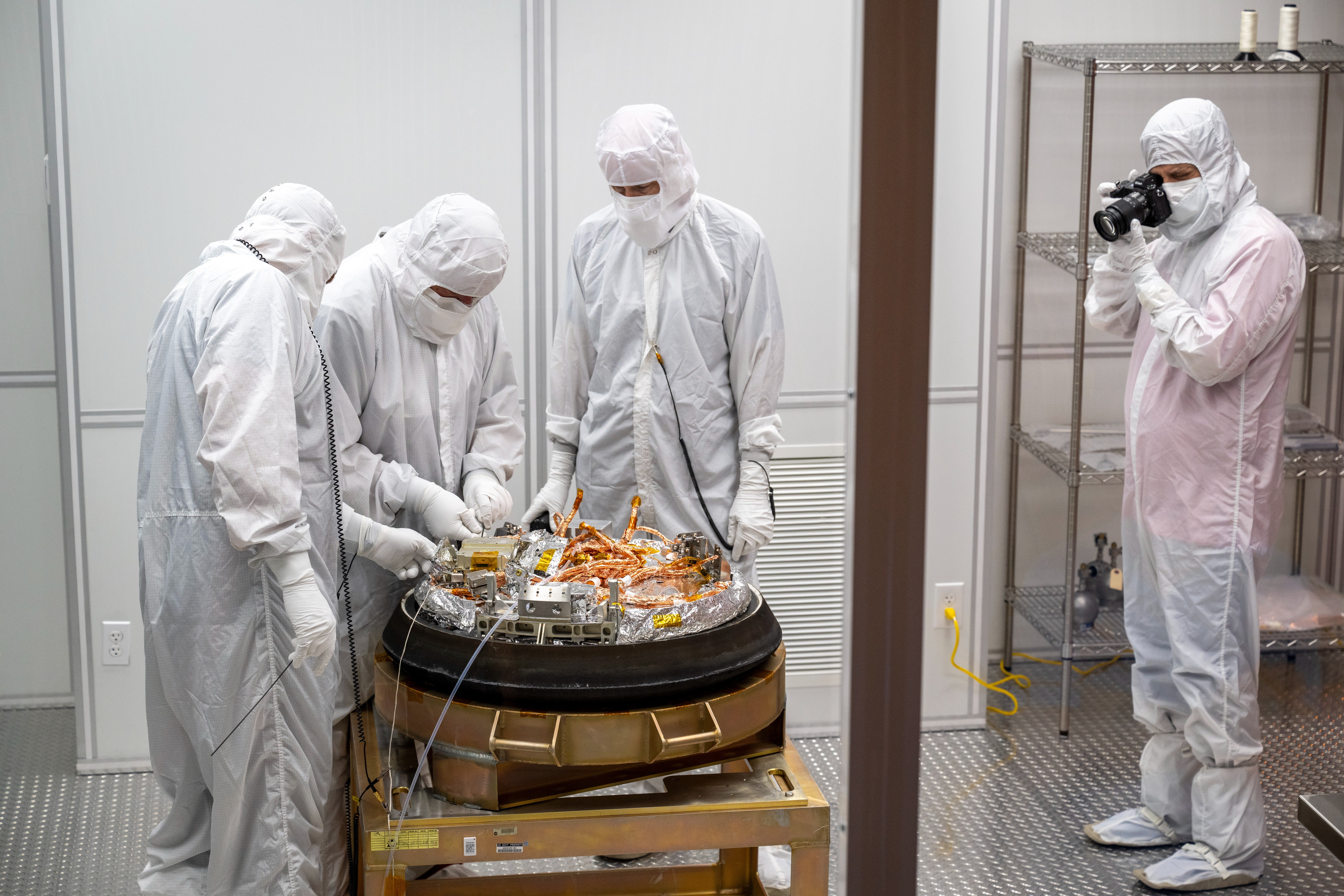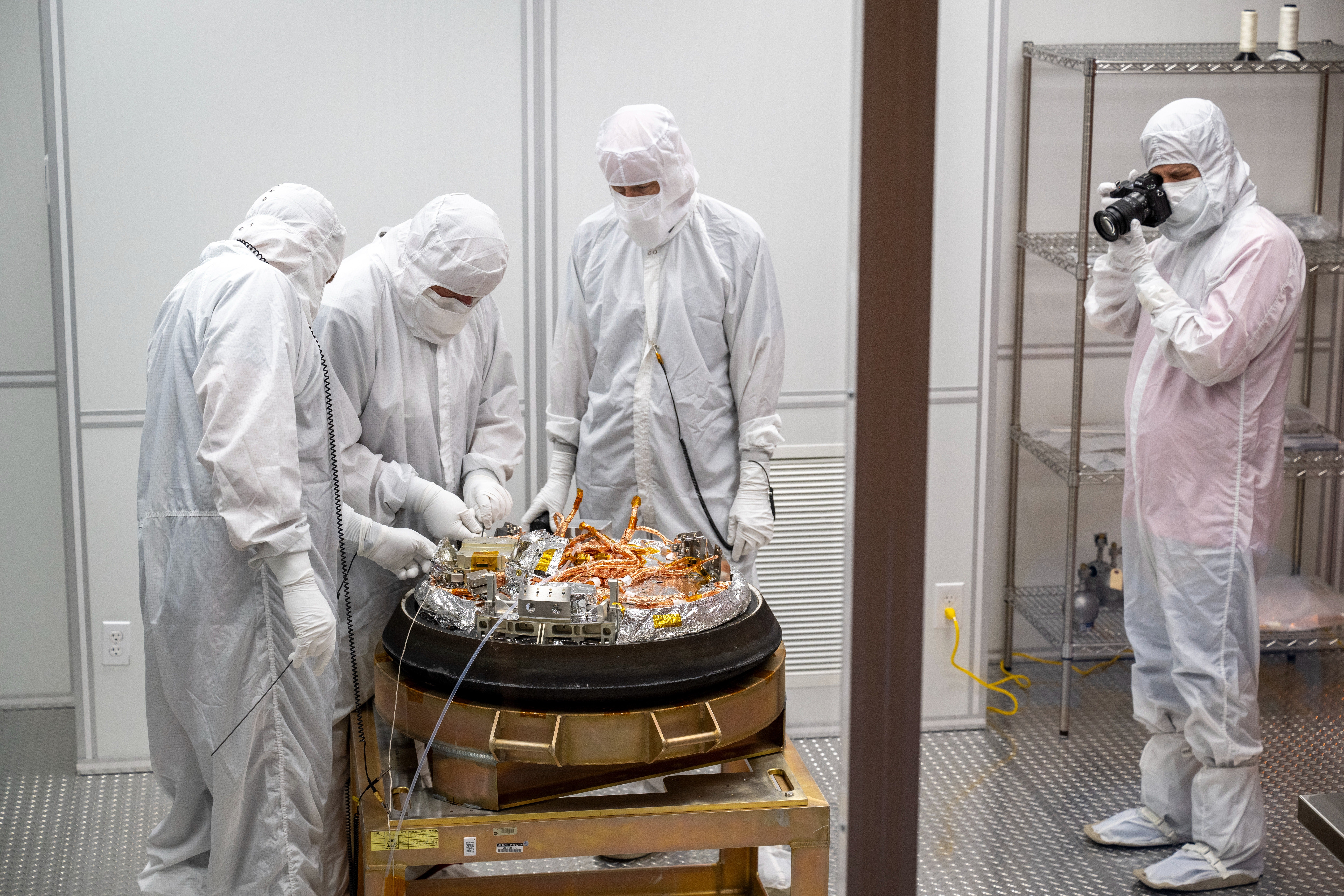
Teams course of the asteroid Bennu sample return capsule from NASA’s OSIRIS-REx mission in a cleanroom in 2023. Credit score rating: NASA.
In 1877, when English geologist Henry Clifton Sorby first examined samples of meteorites beneath a microscope, he seen small, spherical rocks and described them as “drops of fiery rain.” Now generally called chondrules, from the normal Greek chondroswhich implies “grain”, they’re present in nearly all meteorites and, due to this fact, are thought to be a big part of the establishing blocks of planets. However, the processes that formed them keep enigmatic at current.
At current, planetary scientists can look at not solely rocks which have fallen from the sky — they’ve begun to seek for chondrules in provides instantly sampled from asteroids to be taught additional. Most simply these days, researchers have started analyzing provides returned from asteroid 101955 Bennu, and supplied their preliminary findings on the Lunar and Planetary Science Conference in The Woodlands, Texas, earlier this yr.
To this point, researchers have not found one thing in Bennu samples that seems exactly like chondrules seen in meteorites. Nevertheless they’ve found an array of rocks that resemble chondrules to varied ranges, suggesting that asteroids are additional quite a few than meteorites might counsel.
Excavating Bennu’s earlier
In October 2020, NASA’s OSIRIS-REx spacecraft touched down on Bennu and picked up a sample of ground supplies, stowing it in a capsule that the spacecraft returned to the Utah desert Sept. 24, 2023. The next day, the 4.29-ounce (121.6 grams) sample was safely saved at NASA’s Johnson Space Center in Houston.
Although the groups are inside the early ranges of research and have examined decrease than 1 p.c of the sample returned, the outcomes are “nonetheless important findings,” says Harold Connolly Jr., a meteorite expert at Rowan School.
Connolly Jr. led the preliminary analysis of one in every of many Bennu samples. This course of is akin to what geologists do after they uncover rocks on Earth and entails documenting the seems of particles and determining minerals and attainable processes that altered them. By way of this work, researchers hope to infer what the sample was like when it formed.
This major analysis confirmed that Bennu has no definitive chondrules. That discovering is per Bennu’s mineral proof, which reveals that water as quickly as flowed by the asteroid as a result of the ices it contained melted manner again.
“The aqueous alteration would have destroyed the chondrules it may have had,” says Sara Russell, a meteorite researcher on the Pure Historic previous Museum in London who led one different analysis of a sample.
Nonetheless, Russell and her group’s outcomes confirmed that the sample incorporates grains which will very effectively be fragments of chondrules. The group is presently looking at whether or not or not the remnants might very effectively be from one different sort of rock that is thought to have formed inside the photograph voltaic system even ahead of chondrules — generally called calcium-aluminum-rich-inclusions or CAIs. If not, the fragments would probably be from chondrules that escaped being altered by the water.
In a single different abstract supplied on the conference, a bunch led by meteorite consultants Mortgage Le and Kathie Thomas-Keprta on the Johnson Space Center found three grains in a millimeter-sized-sample of Bennu which have comparable compositions and shapes to a chondrule current in a meteorite that fell over Australia in 1969 known as Murchison. Two of the objects inside the Bennu sample have indentations, presumably from contact with water that after flowed by asteroid. Thomas-Keprta says the other object’s development, which resembles bales of hay, has under no circumstances been seen sooner than in a chondrule, as far as she is acutely aware.
Throughout the coming months, the group plans to slice a 100-nanometer-thin sample of the grains to see within the occasion that they comprise completely different provides which is likely to be usually current in chondrules.
For now, they’re calling the grains chondrule-like-objects.
The number of asteroids
If the provides are found to be chondrules, they will current that the inhabitants of asteroids in our photograph voltaic system span a larger selection than indicated by meteorites found on Earth’s ground. And Bennu’s chondrule-like objects counsel that it may very well be a bit utterly completely different from any recognized meteorite, says Russell.
Apparently, researchers moreover found chondrule-like objects inside the sample launched once more from asteroid 162173 Ryugu by Japan’s Hayabusa2 mission in 2020.

“What we’re learning from Ryugu and Bennu is that there are various asteroids in the marketplace which is likely to be comparable, nonetheless don’t exactly match the meteorites in our collections,” says Russell.
As for whether or not or not the returned samples have been able to reply the long-standing question of how chondrules formed, Connolly Jr. says, “Not however.” He supplies that discovering how they formed isn’t easy, though further analysis of the Bennu sample and further spacecraft missions to return additional provides might help.
“It is a should to find the acceptable pond and the acceptable fish,” he says.
If scientists can uncover how chondrules formed, they’d have a larger sense of the extent to which that they had been establishing blocks of planets. It’s attainable that chondrules formed when small grains of mud had been heated early on inside the photograph voltaic system and later cooled. If this is so, then chondrules would have been a giant provide of the provides that accreted to assemble asteroids, comets, and planets.
Alternatively, if chondrules might have solely formed from collisions between planetesimals that had already been constructed, then chondrules would not have been important to kind planets — though they’d nonetheless stand as proof that the early photograph voltaic system was a dynamic, violent place.
It could show that chondrules formed in plenty of strategies, counting on the place inside the photograph voltaic system they formed and when.
“Chondrules are so unusual,” says Thomas-Keprta. “They could under no circumstances have been predicted within the occasion that they didn’t exist.”
